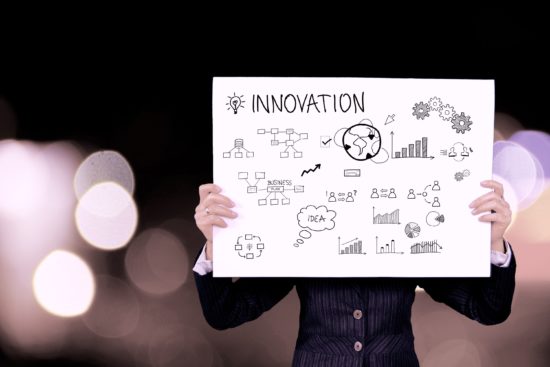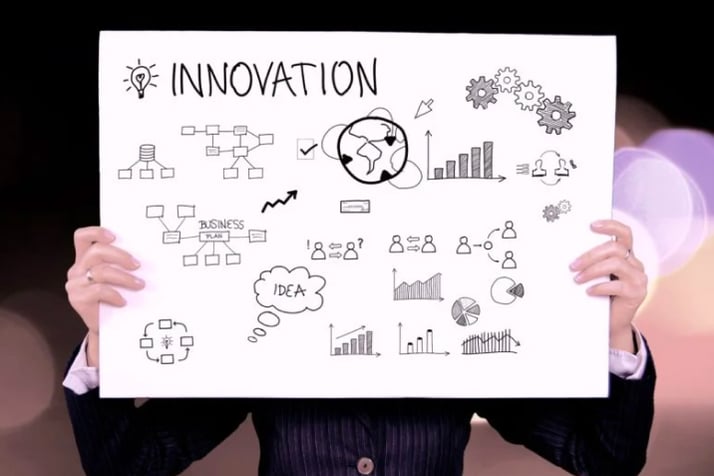
What Is Agile Project Management
Written by Marc Alringer
Out with the old and in with the new! Agile project management is becoming more and more popular in the workplace today. You may think of agile and draw a connection to the software industry but in fact this process can be beneficial for any fast-paced company with a dynamic environment. Although originally designed for the software industry, many other industries are embracing agile management because of its efficiency and emphasis on collaboration.
There is a lot to say about agile project management and its components. The style of management can drastically change according to your work environment. We will go into the basics of how this style of project management can bring numerous benefits to your team.
What Is Agile? Agile is the focus on continuously improving both your product and your process throughout a project’s lifecycle. It is an iterative, flexible approach in which teams divide large projects into multiple smaller ones. With agile you deliver requirements in short developmental rounds, often called sprints, learning as you go.
Iterations allow cross-functional teams to deliver working software within the shortest time frame possible, so feedback and adjustments can be made accordingly. This frequently repeated process is an essential feature in agile project management as it ensures teams are constantly communicating and adapting to all last-minute changes.

In 2001, seasoned developers got together in support of “lightweight” development approaches and ended up writing the Agile Manifesto. The manifesto is a collection of principles that outline the criteria of the agile process. There are twelve core values that guide agile project management. As software development has become more advanced we have modernized these core values.
-
Our highest priority is to satisfy the customer through early and continuous delivery of valuable software.
-
Changing requirements are welcomed at any stage of the process to give the customer a competitive advantage. This helps you avoid spending valuable time on lesser-used features, or ones that will be out of date by the time the product is finished.
-
Deliver a product or service frequently, within a few weeks not months.
-
Stakeholders and developers must collaborate closely on a daily basis.
-
Build projects around motivated individuals, giving them the environment, support and trust they need to get the job done.
-
Face-to-face meetings are the most efficient and effective method for conveying information.
-
Working features are the primary measure of progress.
-
Development should be sustainable which essentially means, don’t be a hero and work 120 hours a week. Sponsors, developers and users should be able to maintain a constant pace indefinitely.
-
Continuously improving the code, even to the point of re-writing portions of it, improves agility.
-
Simplicity–the art of maximizing the amount of work not done–is essential.
-
The best architectures, requirements, and designs are produced by teams that are empowered to decide how and when the work will be done.
-
Just as the team should be continually improving the project, the team should be continually improving how they work as a team.
The Agile Approach
We can take the values from the Agile Manifesto into our project approach.
-
Discovery
The importance of understanding your client’s vision for the project cannot be overstated. Uncovering this vision through collaboration will help both parties understand what needs to be accomplished. You will also need to determine the key team members and resources needed for the project.
-
Product Backlog
Next, the team begins to create a wishlist of features they’d like to see completed over the course of the project. It is important to prioritize the most critical features of the project; complete those items before moving on to the lower value features.
-
Iterations
Then, it’s time to get to work. The team breaks their work into tasks for the first iteration and begins working on them. Now the first sprint is underway.
-
Repeat
Once the team finishes the sprint, they will often demo their work before pulling the next few features from the backlog into the new sprint. After this, it’s rinse and repeat until the project is finished.

Applying Agile
There are many different ways for teams to implement Agile practices. The most popular Agile method, Scrum, is an iterative series of events broken into sprints. This generally includes the creation and maintenance of the product backlog, sprint planning, daily scrums, end-of-sprint demos and sprint retrospectives.
For the first part of the typical Agile sprint, the team holds a sprint planning meeting and decides which features will be completed during the sprint. In agile project management, features are often referred to as “user stories” because user stories describe the ways that users interact with an application. Next, the team breaks the user stories into tasks. Each user story may require one or many people to contribute to the story, depending on nature of the work.
Each day of the sprint, the team will meet up for a daily scrum meeting to discuss each team member’s progress or anything that’s getting in their way. A “scrum master” keeps track of progress, often by using visual aids like a storyboard.
Once the sprint is complete, the team holds a “sprint retrospective” to talk about what went well and what didn’t. By assessing the previous sprint, the team can find ways to work more efficiently in the future. This helps teams adapt and improve as they move toward project completion.
Some other popular agile methods are Kanban and XP (Extreme Programming). I won’t get into detail about each method but they all share the same end goal of improving quality and responsiveness to changing priorities.
Traditional Project Management
The traditional project management approach, Waterfall, moves in a strict linear direction. Adjustments to a project can be difficult to incorporate as fixed requirements are established up front before any work or testing has begun. Agile rejects these traditional methods as too constricting and slow.

Instead, agile project management relies on adaptive planning and a collaborative effort to bring out results. A best practice for agile project management is testing after every iteration (or sprint). Throughout the project lifecycle, the team continuously improves both the product and the process.
Agile project management doesn’t call for a traditional project manager to oversee personnel, budget, quality, and requirements. Those tasks are distributed among team members. Team members must communicate extremely well continuously evaluating time and cost as they move through a project. Additionally, they must be able to collaborate with each other and new members to keep the project on track.
Traditional project managers are not completely out of the picture, there is still a need for management and guidance. These managers are simply responsible for coordinating the workload versus managing the smaller details of a project.
Generally speaking, agile project management consist of three parts; a product owner, a team leader and team members.
-
A product owner, or a visionary, is the main person who oversees the project as they are experts on the product. They understand the vision and can most accurately set expectations for the project. These managers must possess a high level of adaptability to make decisions and provide information quickly in a frequently changing environment. They also need to be able to prioritize. They are the final arbiter as to what is more important and thus what should be worked on.
-
The team leader, or often called scrum master, carries over the soft skills of a traditional project manager. They provide a coordinator role supporting the team and keeping the agile process consistent. They are responsible for looking after each of the iterations and their completion.
-
As mentioned above, team members are self-organized and take over the technical skills of a traditional manager such as planning and scheduling. They are the ones responsible for designing, developing, testing, and project delivery. They are self-organized and cross-functional.

Why Agile Project Management Works?
Agile project management works because it’s relevant to what happens in our everyday life. Plans change all the time, and businesses need to respond quickly. Agile gives teams’ greater flexibility to shifting needs. The constant testing and modifying allows for quick detection and resolution of defects and issues. This ultimately results in lower costs and a product can go to market quicker. Additionally, customer satisfaction is increased because user feedback is incorporated throughout the process. You don’t have to take my word for it, here are some impressive statistics from the 12th Annual State Agile Report to back up these claims.
-
55% productivity increase for companies that adopted agile
-
46% increase in customer/user satisfaction
-
62% increase in delivery speed/time to market
-
75% of agile organizations met their business goals
Drawbacks
Although agile is an extremely efficient way to manage dynamic and complicated projects it is not meant for every environment. A lot of responsibility relies on the team members’ communication which, if not on point, can lead to late and over-budget projects, if they get it done at all. This method can also fail if the team cannot get firm and timely feedback about what they are building, as this often leads to costly re-work.
Overall, agile project management provides numerous benefits. With the right management and full participation from every member, agile can be a great method to implement in your next project.
Thanks for reading!
If you are looking for a software development company that could help you out with one of your projects, feel free to reach out to us here at Seamgen! We would be more than happy to discuss your project.






